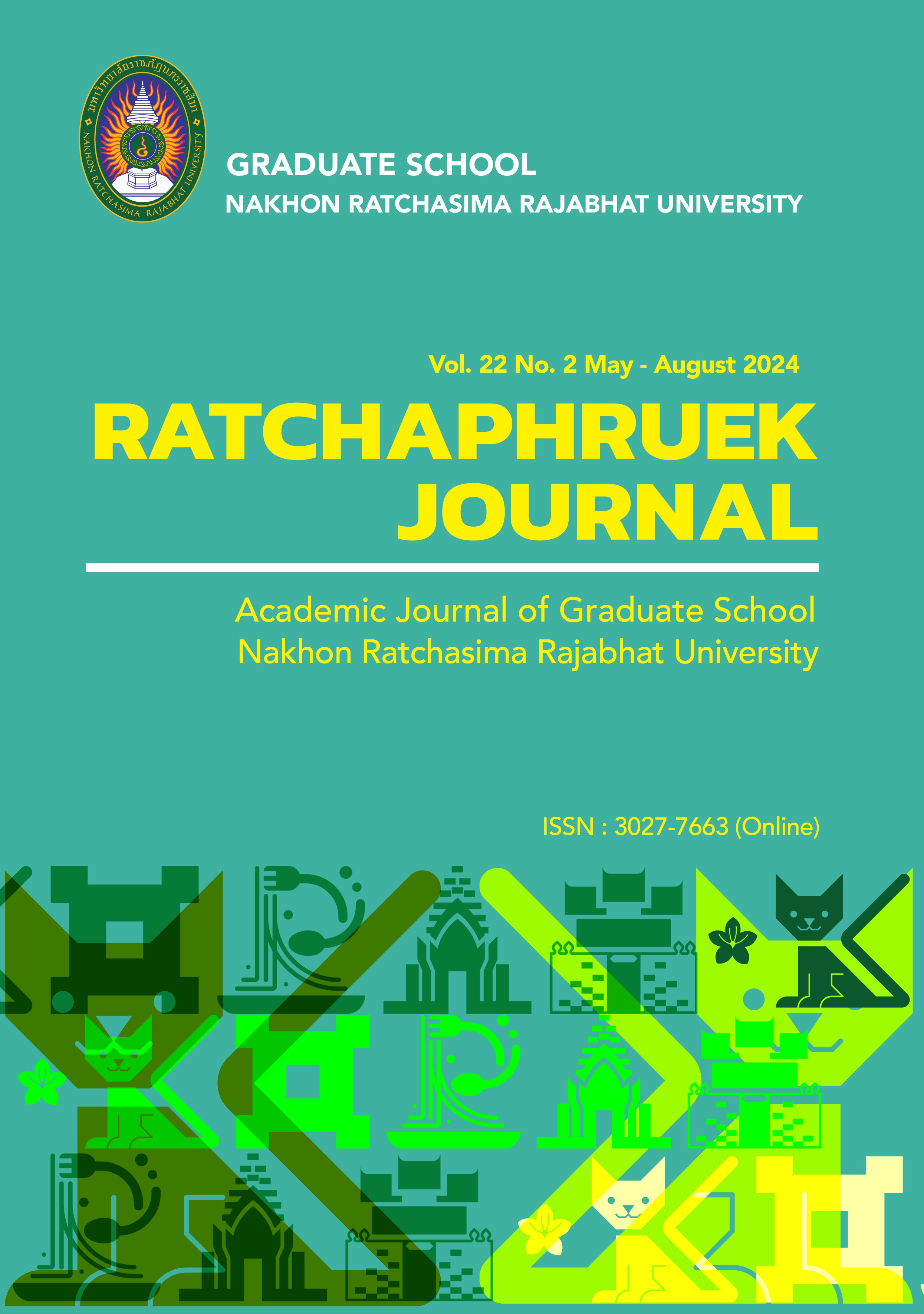Academic Collaboration Model of the Teacher in a Secondary School Consortium
Main Article Content
Abstract
The objectives of this research were: 1) to study the states and needs on academic cooperation of the teachers in a secondary school consortium as perceived by 258 school directors; 2) to construct the academic cooperation model of the teachers in a secondary school consortium as verified by 9 experts; 3) to implement the academic cooperation model of the teachers in a secondary school consortium with 30 teachers in Muang Buriram secondary school consortium; and 4) to evaluate the academic cooperation model of the teachers in a secondary school consortium by 11 experts and relevant stakeholders. The research instruments were questionnaires, interviews, and evaluation forms. The statistics used to analyze the data were percentage, mean, and standard deviation.
The findings revealed that: 1) the states and needs on academic cooperation of the teachers in a secondary school consortium were at a high level; 2) the academic cooperation model of the teachers in a secondary school consortium included 4 components, namely (1) teacher professional development, (2) learning management efficiency, (3) innovation and technology media for learning management, and (4) learners’ achievement enhancement; 3) the implementing result indicated that the items in learning management efficiency components before the implementation were at a fair quality while after the implementation was at the good quality; and 4) the evaluation result of the academic cooperation model of the teachers in a secondary school consortium found that the appropriateness, possibility, and utilization in overall were at a high level.
Article Details

This work is licensed under a Creative Commons Attribution-NonCommercial-NoDerivatives 4.0 International License.
References
กระทรวงศึกษาธิการ. (2556). คู่มือการบริหารสถานศึกษาที่เป็นนิติบุคคล. กรุงเทพฯ: โรงพิมพ์ชุมชนสหกรณ์การเกษตรแห่งประเทศไทย.
ต่อศักดิ์ บุญเสือ. (2556). การพัฒนารูปแบบการบริหารสถานศึกษาแบบมีส่วนร่วม สำหรับสถานศึกษาสังกัดสำนักงานเขตพื้นที่การศึกษาประถมศึกษาลพบุรี เขต 2. วารสารวิจัยและพัฒนา มหาวิทยาลัยราชภัฏบุรีรัมย์, 8(2), น. 44-50.
ณัฐพงษ์ ฉลาดแย้ม. (2552). การพัฒนากิจกรรมโครงการวิทยาศาสตร์เพื่อส่งเสริมความคิดสร้างสรรค์ของนักเรียนในช่วงชั้นที่ 3 โรงเรียนในอำเภอศรีบุญเรือง สำนักงานเขตพื้นที่การศึกษาหนองบัวลำภู เขต 1. วารสารศึกษาศาสตร์ มหาวิทยาลัยขอนแก่น, 28(1), น. 74-82.
บุญเพิ่ม สอนภักดี. (2559). รูปแบบเครือข่ายความร่วมมือเพื่อพัฒนาการจัดการศึกษาของโรงเรียนในสังกัดเทศบาล (รายงานผลการวิจัย). พิษณุโลก: มหาวิทยาลัยนเรศวร.
พิสิฐ เทพไกรวัล. (2554). การพัฒนารูปแบบเครือข่ายความร่วมมือเพื่อคุณภาพการจัดการศึกษาในโรงเรียนประถมศึกษาขนาดเล็ก. (รายงานผลการวิจัย). ขอนแก่น: มหาวิทยาลัย ขอนแก่น.
ระวี จันทะนาม. (2557). รูปแบบการบริหารงานวิชาการแบบมีส่วนร่วมที่มีประสิทธิผลในโรงเรียนขนาดกลาง (รายงานผลการวิจัย). อุบลราชธานี: มหาวิทยาลัยราชภัฏอุบลราชธานี.
วิชัย แสงศรี. (2552). การศึกษาวิเคราะห์และพัฒนารูปแบบการบริหารจัดการเครือข่ายสถานศึกษาในเขตพื้นที่ชนบทภาคตะวันออกเฉียงเหนือ (รายงานผลการวิจัย). กรุงเทพฯ: จุฬาลงกรณ์มหาวิทยาลัย.
วีระพล บุญทวี, พงษ์ธร สิงห์พันธ์ และชวนคิด มะเสนะ. (2565). รูปแบบเครือข่ายความร่วมมือในการบริหารโรงเรียนมัธยมศึกษา (รายงานผลการวิจัย). อุบลราชธานี: มหาวิทยาลัยราชภัฏอุบลราชธานี.
ศิริพร ตันติยมาศ. (2550). รูปแบบการบริหารเครือข่ายโรงเรียนแบบมีส่วนร่วมที่มีประสิทธิผล สังกัดกรุงเทพมหานคร (รายงานผลการวิจัย). นครปฐม: มหาวิทยาลัยศิลปากร.
สมาน อัศวภูมิ. (2550). การใช้วิจัยพัฒนารูปแบบในวิทยานิพนธ์ระดับปริญญาเอก. วารสารมหาวิทยาลัยราชภัฏอุบลราชธานี, 2(2), น. 83-84.
สุรินทร์ แก้วมณี. (2558). รูปแบบการบริหารแบบมีส่วนร่วมขององค์คณะบุคคลเพื่อส่งเสริมประสิทธิภาพ สำนักงานเขตพื้นที่การศึกษาประถมศึกษา (รายงานผลการวิจัย). พิษณุโลก: มหาวิทยาลัยนเรศวร.
สำนักงานคณะกรรมการการศึกษาขั้นพื้นฐาน. (2550). แนวทางการกระจายอํานาจการบริหารและการจัดการศึกษาให้คณะกรรมการ สํานักงานเขตพื้นที่การศึกษาและสถานศึกษาตามกฎกระทรวงกําหนดหลักเกณฑและวิธีการกระจายอํานาจบริหารและจัดการศึกษา พ.ศ. 2550. กรุงเทพฯ: ผู้แต่ง.
สำนักงานเลขาธิการสภาการศึกษา. (2552). ข้อเสนอการปฏิรูปการศึกษาในทศวรรษที่สอง (พ.ศ. 2552-2561). กรุงเทพฯ: ผู้แต่ง.
Plymouth State University. (2003). Area of Concern/Targets for Growth indicators. Retrieved January9, 2004, from http//www.plymount.edu/educate/growth_ indicators.pdf


